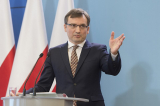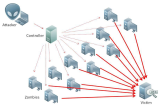
The wealth of each Portuguese adult grew by 3% in the past year, leading to a 22% increase in the number of millionaires from 136,000 in 2020 to over 166,000 by the close of 2022.
As revealed by UBS in the Global Wealth Report 2023, the median wealth held by each Portuguese adult reached €66,015 at the conclusion of the previous year. This marked an almost twofold increase compared to 2012 (€34,725) and a 2.89% rise from 2021. The collective global fortune for 2022 amounted to €149,000, a 76% surge since 2012. The resilience of Portuguese assets during the past year was largely attributed to real estate holdings, which, akin to global trends, "remained resilient, despite the rapid increase of interest rates," according to UBS analysts.
Additionally, UBS researchers disclosed that at the close of 2022, the number of Portuguese individuals possessing wealth exceeding €1 million surpassed 166,000, accounting for approximately 2% of the adult population. This figure represents a 23% surge compared to the count of millionaires registered by the close of 2020, signifying the addition of 31,000 new millionaires. Moreover, it signifies an increase of 8,700 millionaires from 2021.
Among these millionaires, the Global Wealth Report 2023 identified 108 individuals with ultra-high fortunes (over $50 million), including 9 individuals with fortunes surpassing €500 million (about $470 million).
Despite these advancements, Portugal's share of global wealth remains relatively modest. UBS data indicates that the wealth generated in Portugal constitutes only 0.3% of global wealth. The majority of Portuguese individuals (43%) hold assets between $10,000 and $100,000 (approximately €9,400 and €94,000).
UBS analysts also pointed out that the Portuguese population's debt has reduced over the last decade. While debt per Portuguese adult stood at nearly €21,000 in 2012, it had decreased by 6.8% to €19,500 by the close of the previous year. This reduction has significantly affected the debt-to-wealth ratio, which decreased from 60.3% in 2012 to 29.6% by the close of the previous year. Photo by Mister No, Wikimedia commons.








































